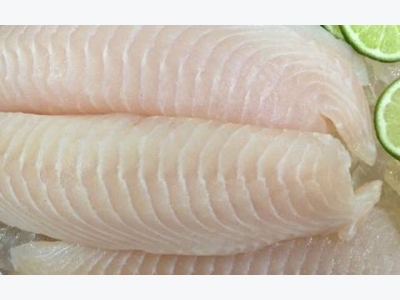Vietnam expecting explosive growth of its tilapia sector

New IntraFish report takes you inside the data to show you which countries hold the key to the future of global tilapia production.
By 2020, Vietnam expects to more than double the 150,000 metric tons of tilapia it produced in 2016.
The country’s 21,000 hectares of tilapia ponds is expected to grow by an estimated 57 percent by 2020 to as much as 33 hectares, according to projections by the Vietnamese government. And as much as 60 percent of that production will be for export markets around the world.
The country’s top 2015 export markets were: The United States, $6 million (€5.3 million); Spain, $3 million (€2.7 million); and Colombia, $3 million.
By 2030, the farming areas are expected to hit 40,000 hectares with an output of 400,000 metric tons, 45 percent to 50 percent of which will be for exports.
These are just some of the details contained in the comprehensive profile of Vietnam's tilapia industry contained the IntraFish Farmed Whitefish Report.
Along with the profile of Vietnam, the report includes profiles of 13 additional nations producing tilapia, complete with production statistics, market insight and projections of future production growth.
The IntraFish Farmed Whitefish Report is a must read for those interested in pangasius and tilapia production, and includes:
- 88 pages of in-depth market data
- Production statistics from the last 10 years from all key producers
- Market statistics from last 10 years in volume, value and product format
- Re-exporting data in terms of volumes and value
- Detailed market breakdowns for Europe and the United States
- Profiles of key producers for both species
If you are a buyer, producer, product innovator or investor, this report is essential reading.
Don’t be left behind on farmed whitefish trends -- they'll be impacting the sector for years to come.
Related news
 Australia lifts ban on VN uncooked shrimp
Australia lifts ban on VN uncooked shrimp Australia has lifted the ban it imposed in January on uncooked Vietnamese shrimp products. Vietnamese companies may resume importing raw
 Tech start-up claims to reduce bycatch by up to 90% using LEDs
Tech start-up claims to reduce bycatch by up to 90% using LEDs Tech start-up SafetyNet Technologies claims to be able to reduce bycatch in certain fisheries by as much as 90 percent by using simple light emitting devices.
 Soy sustainability protocol approved by BAP
Soy sustainability protocol approved by BAP The Global Aquaculture Alliance (GAA) Best Aquaculture Practices (BAP) has recently included the SSAP as a soy sourcing standard as a part of its revised feed